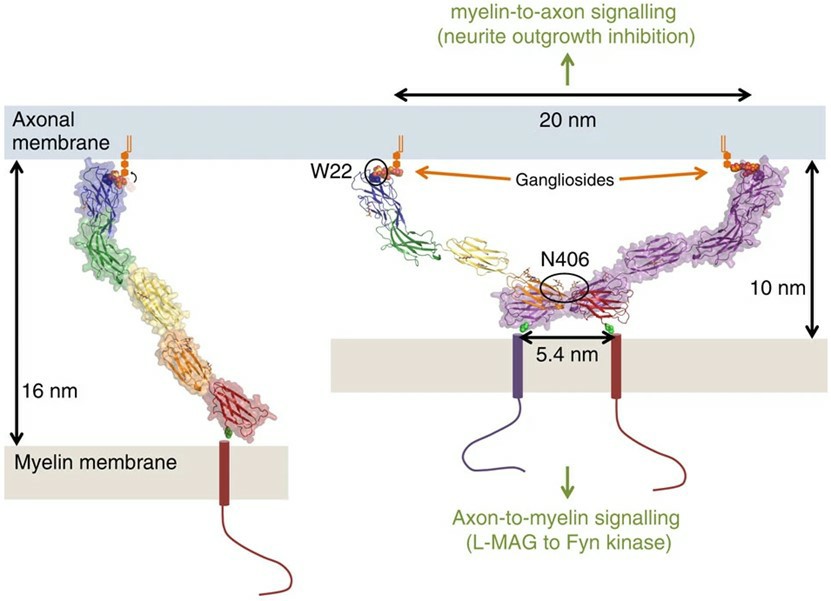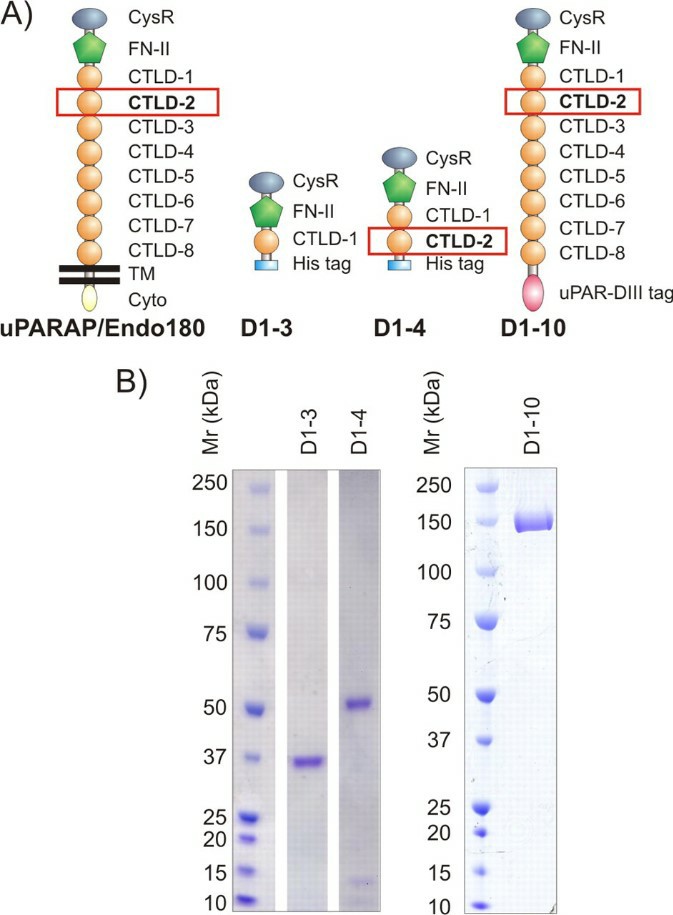Glycoprotein Function as Receptor
The functions of glycoproteins are tremendously broad and include cell attachment recognition, homeostasis, transport of molecules, and enzymatic and immunology recognition domains. The following are some examples of glycoproteins that function as receptors.
Some Examples of Glycoproteins
Example 1: Myelin-associated Glycoprotein (MAG)
The MAG is a 100 kDa transmembrane glycoprotein that is selectively localized in periaxonal Schwann cell and oligodendroglial membranes of myelin sheaths, suggesting that it functions in glia-axon interactions in both the PNS and CNS. It appears to function both as a ligand for an axonal receptor that is needed for the maintenance of myelinated axons and as a receptor for an axonal signal that promotes the differentiation, maintenance, and survival of oligodendrocytes.
 Fig.1 MAG-based myelin-axon engagement and signaling.1, 3
Fig.1 MAG-based myelin-axon engagement and signaling.1, 3
Example 2: Endocytic Transmembrane Glycoprotein Endo180 as a Novel Collagen Receptor
Collagen is the most abundant group of proteins in vertebrates. It plays an important role in tissue development, morphogenesis and growth. In addition to its mechanical properties, it also acts as a substrate for cell adhesion and migration and mediates signal events by binding to cell surface receptors. Endo180, a member of the mannose receptor family, cycles constitutively between clathrin-coated pits on the cell surface and endosomes in the cell core. Endo180 is the fourth and final member of the mannose receptor family, which also comprises the mannose receptor, the M-type phospholipase A2 (PLA2R) receptor, and DEC-205. All 4 receptors contain an N-terminal cysteine-rich or ricin-type domain, a fibronectin type II (FNII) domain, 8 C-type-lectin domains, a single transmembrane domain, and a short cytoplasmic domain. The proposal that Endo180 might function as a collagen receptor comes from two sources. First, FNII domains in other proteins including fibronectin and the gelatinases MMP2 and MMP9 have been demonstrated to confer binding to denatured collagen. Second, Endo180 has been identified as part of a trimolecular cell surface complex together with prourokinase plasminogen activator (prouPA) and the uPA receptor (uPAR), hence its alternative name of uPAR associated protein, uPARAP.
 Fig.2 Composition and SDS-PAGE analysis of uPARAP.2, 3
Fig.2 Composition and SDS-PAGE analysis of uPARAP.2, 3
Custom Services for Glycoprotein
Creative Biolabs is a leading biotechnology company. We combine innovative R&D, a keen knowledge of the latest trends, and state-of-the-art research to develop glycoprotein solutions that add a unique competitive edge to your product or project. Our experienced expert team, enthusiastic service attitude, high-quality project results, and fast delivery time, making project cooperation easier. If you are interested in our services or technologies, please contact us for more details.
References
-
Pronker, Matti F., et al. "Structural basis of myelin-associated glycoprotein adhesion and signalling." Nature communications 7.1 (2016): 13584.
-
Jürgensen, Henrik J., et al. "A novel functional role of collagen glycosylation: interaction with the endocytic collagen receptor uparap/ENDO180." Journal of Biological Chemistry 286.37 (2011): 32736-32748.
-
Distributed under Open Access license CC BY 4.0, without modification.
For Research Use Only.
Resources

 Fig.1 MAG-based myelin-axon engagement and signaling.1, 3
Fig.1 MAG-based myelin-axon engagement and signaling.1, 3
 Fig.2 Composition and SDS-PAGE analysis of uPARAP.2, 3
Fig.2 Composition and SDS-PAGE analysis of uPARAP.2, 3



